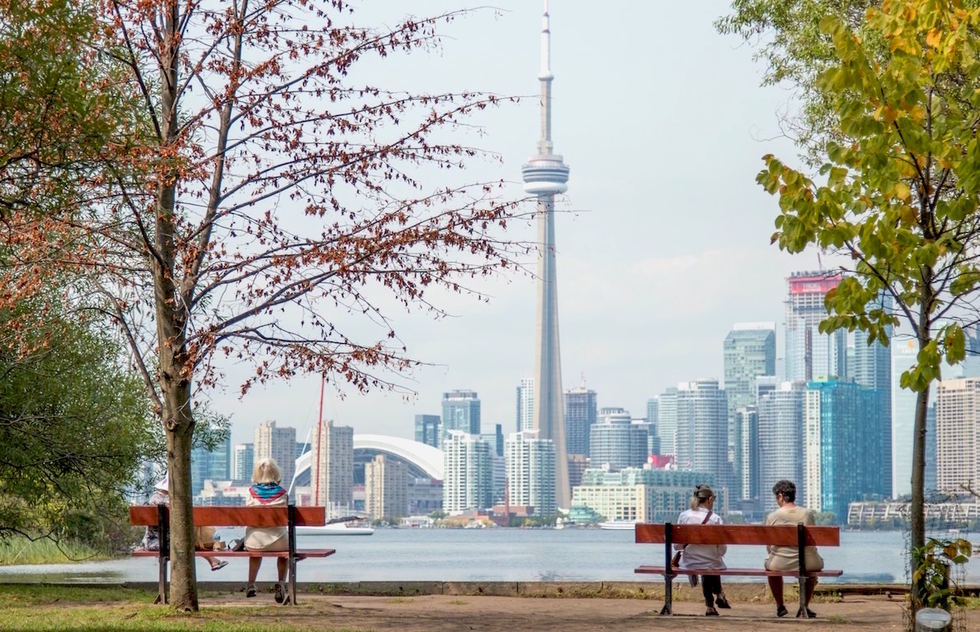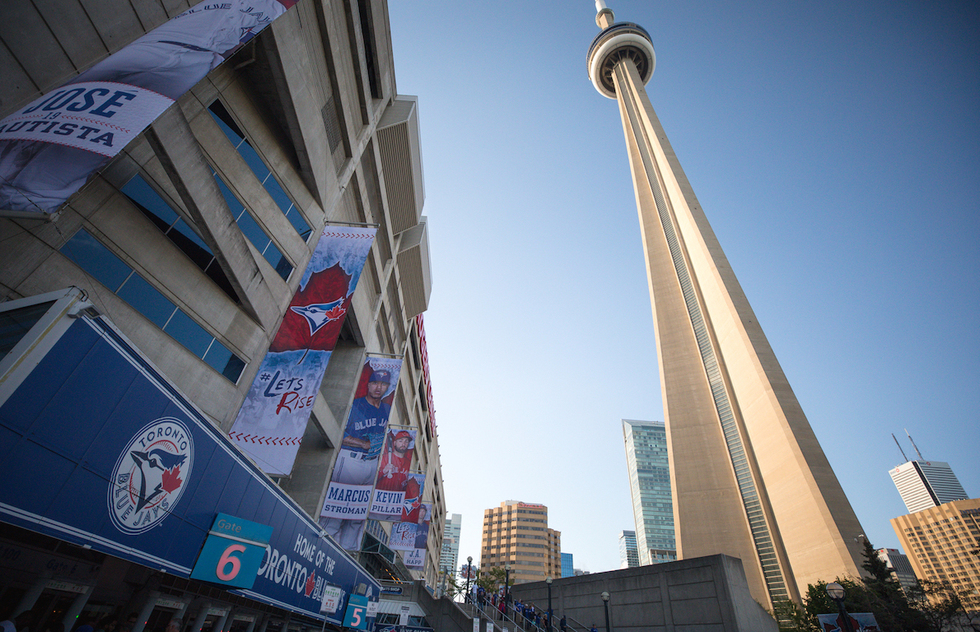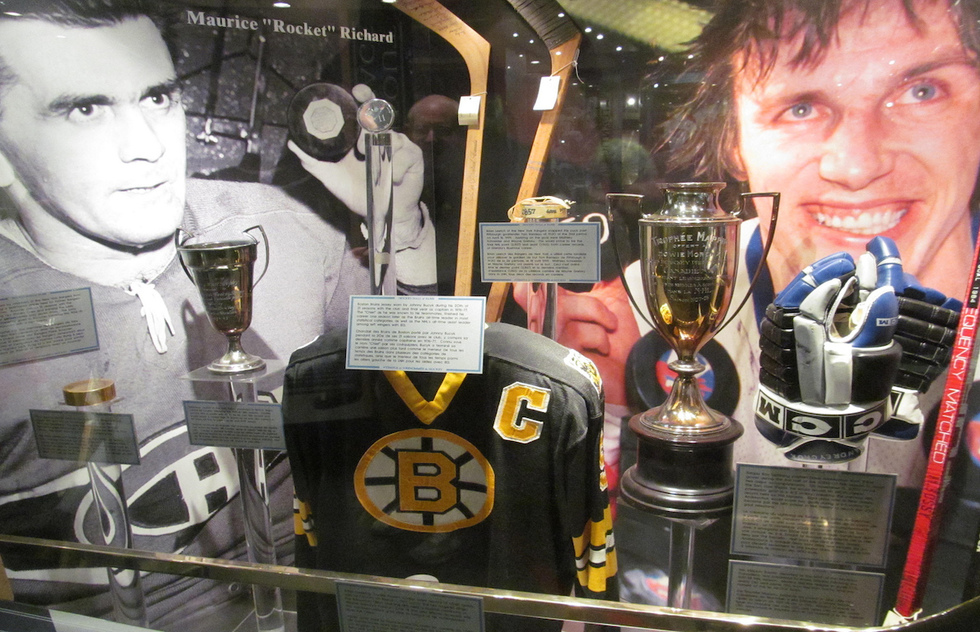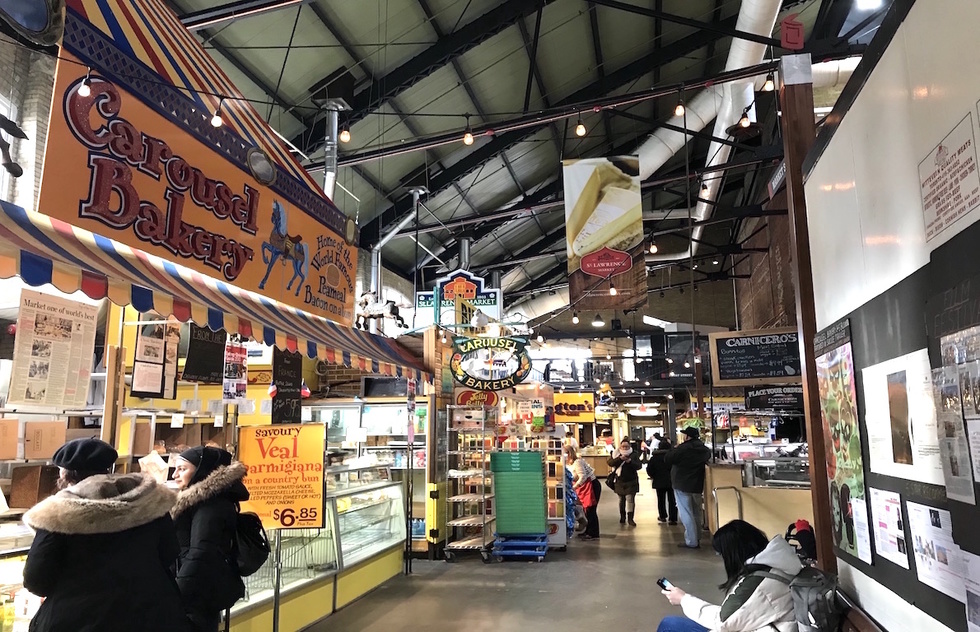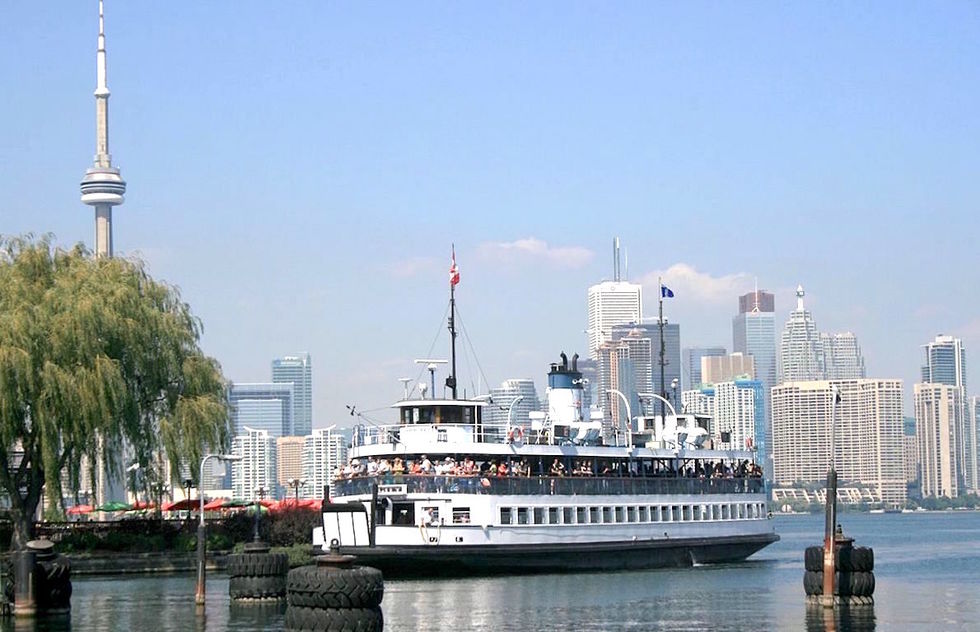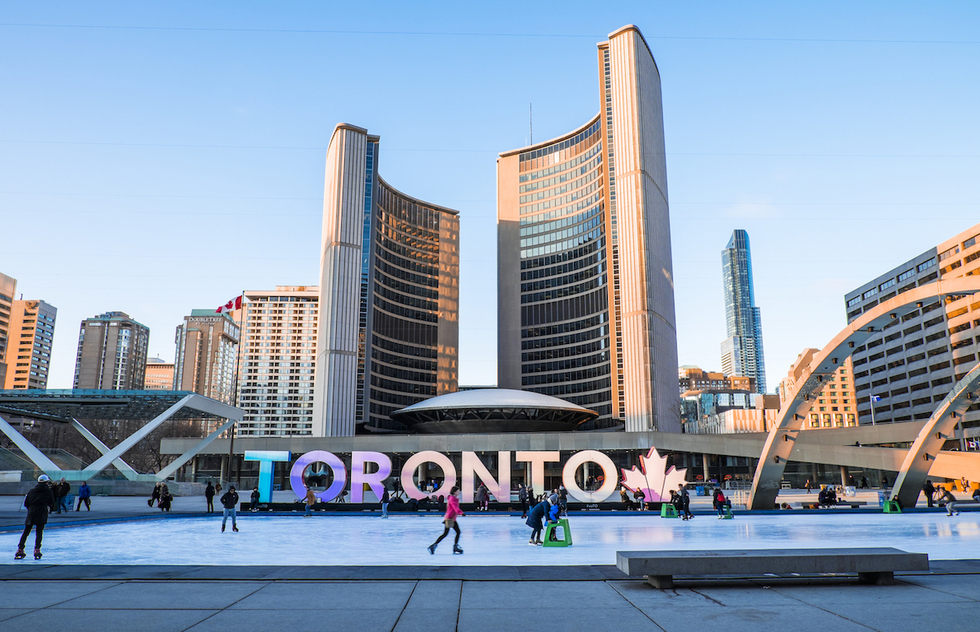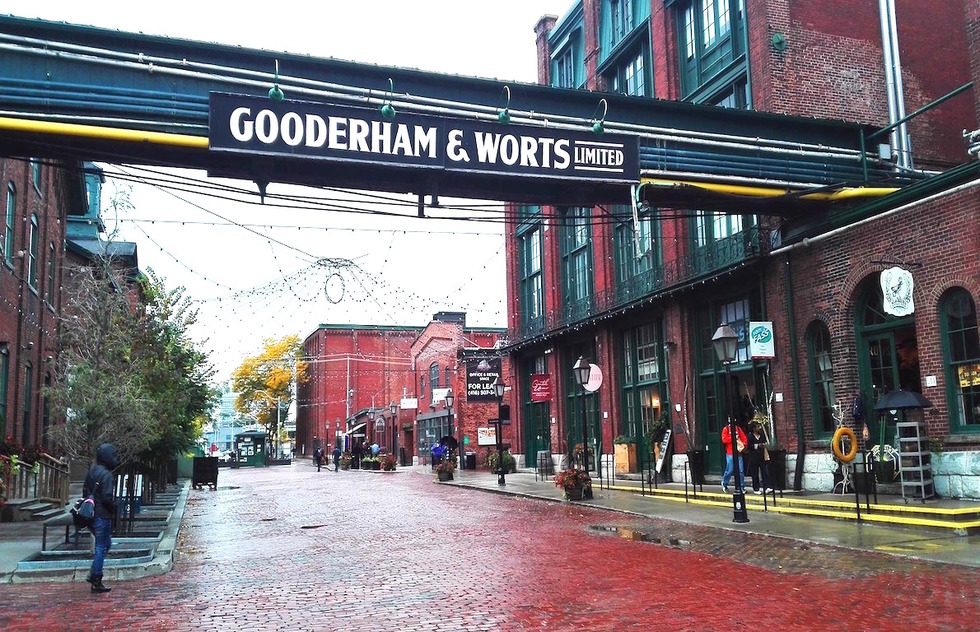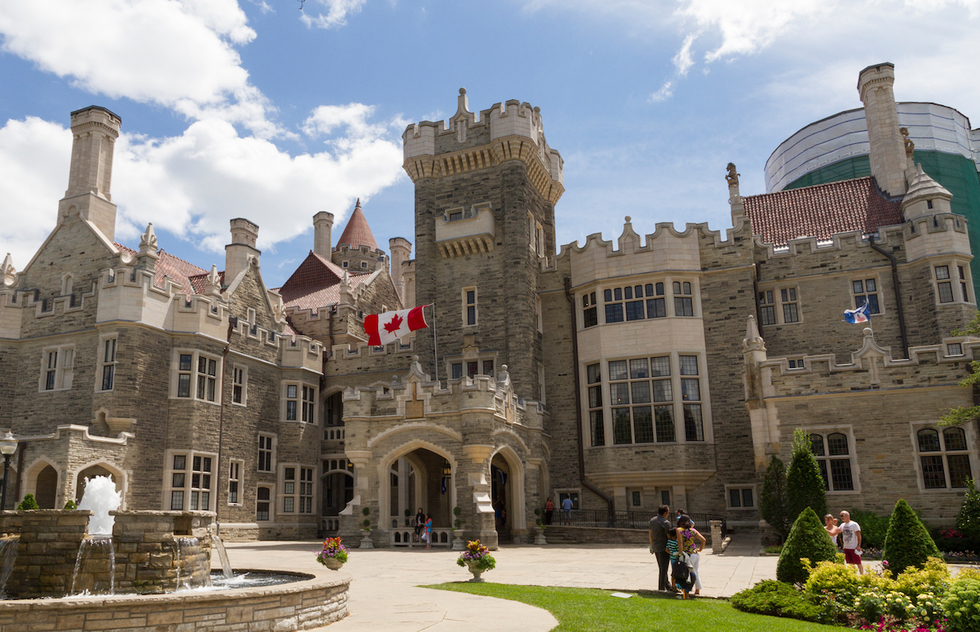What to See in Toronto When You Don't Have Much Time
By Dika LamAt 1,815 feet, the CN Tower was the world’s tallest freestanding structure for over 30 years. Zip up to the main deck in 58 seconds via a glass-fronted elevator (some have glass floor panels for maximum acrophobia), then head one level down to jump, crawl, or meditate on the mindblowing 2.5-inch-thick glass floor. For an extra fee, the higher SkyPod boasts visibility of up to 100 miles. At EdgeWalk, harnessed thrill-seekers in jumpsuits venture around an outdoor ledge 116 stories up (book online). If you want to flip this itinerary around and admire the city at sunset, note that ordering a prix fixe at the revolving 360 Restaurant includes admission to two levels and is a good way to skip the lengthy queues.
Across the street in Roundhouse Park, the Toronto Railway Museum presents vintage trains, including a locomotive turntable, and a miniature choo-choo ride for kids. The adjacent Steam Whistle Brewery makes its own pilsner and offers tours and tastes.
In the summer, Lake Ontario's Harbourfront area bursts with concerts, festivals, and cruises (try an evening sail on a tall ship). In the winter, you can take to the ice at Saturday night DJ skate parties, and the Power Plant contemporary art gallery is free all year. The delightful Music Garden, codesigned by cellist Yo-Yo Ma, was inspired by a Bach suite, each landscape representing a dance movement. Complimentary garden tours take place on free concert days.
Time permitting, take a ferry to the car-free Toronto islands to fall in love with the skyline and explore the connected isles on foot or rented bike. Try stand-up paddleboarding or kayaking in the lagoons, enjoy the rides and petting zoo at Centreville theme park, or amble the boardwalk and beaches, pausing for a drink at one of the cafes. At Hanlan’s Point, one stretch of sand is designated clothing-optional.
The Greater Toronto Area encompasses five major Chinese neighborhoods, but downtown Chinatown’s main vein is Spadina Avenue. Begin at the intersection of Spadina and Dundas and follow your stomach: Asian Legend specializes in soup-filled dumplings and other northern Chinese cuisine, while King’s Noodle serves up Cantonese BBQ along with its namesake bowls.
If you’re indecisive, Kensington Avenue north of Dundas will take you into the Kensington Market quarter. A sign outside a convenience store reads, “Can’t we all just get oolong?” Turns out we can—and even better, we can get whatever we want here. In this international boho crossroads, you can find soufflé pancakes, Japanese street food, tattoo parlors, vintage clothing, shave ice, tortas, jerk chicken, gourmet cheese and, at barware specialist Cocktail Emporium, absinthe fountains. If that’s not enough, the cute restaurants dotting the stretch of Baldwin between McCaul and Beverley serve everything from bistro fare to ramen.
Stretching from Bloor Street north to Davenport and Yonge Street west to Avenue Road, this ’hood is a haven for one-percenters and the businesses that love them. Still, with its converted townhouses, interlocked paving stones, and charming laneways, the area manages to avoid the sterility that usually characterizes such enclaves. There’s a branch of Café Boulud in the Four Seasons Hotel, but outdoor drinking and dining at longtime stalwarts like Hemingway’s or Sassafraz is de rigueur on a beautiful day. (Toronto is a patio-mad town, complete with ample heat lamps for chilly evenings.) If you’re not feeling fancypants, duck into the Oxley for gastropub fare or walk west for Indian cuisine at the Host.
Shop-wise, the big stores are on Bloor: Fashionistas can drop bags of loonies (Canadian dollar coins) at Holt Renfrew, while flaneurs will appreciate the boutiques and intimate eateries along Cumberland or Yorkville Avenues.
Up for a museum marathon? The Bata Shoe Museum is as one-of-a-kind as Cinderella’s slipper. Though you might assume the exhibits are as substantial as a pair of strappy heels, 4,500 years of shoe history are the guiding principle here. On display are actual Chinese slippers for bound feet, Roman gladiator sandals, and chestnut-crushing French clogs.
If you’re more into outsize architectural trappings, Casa Loma will satisfy your stained glass and mahogany needs. Completed in 1914, the 64,700-square-foot, 98-room mansion was the passion project of financier Sir Henry Pellatt, who imported Scottish stonemasons and Spanish tile, spending megamillions on the house before dying more or less penniless in the ’burbs, sharing a home with his chauffeur. Five acres of gardens frame this baronial extravagance, and an 800-foot-long tunnel connects the house to its elegant stables.
What's on TOnight gives a good overview of citywide entertainment. Roy Thomson Hall hosts the Toronto Symphony Orchestra, while the Four Seasons Centre for the Performing Arts is home to the National Ballet of Canada and the Canadian Opera Company (the latter offers discount tickets for ages 16 to 29).
As for theater, Mirvish Productions delivers Tony-award-winning plays and crowd-pleasing musicals, while cutting-edge fare can be found at the Toronto Fringe Festival, which hosts over 150 productions each July. The renowned Toronto International Film Festival (TIFF) takes place every September, but TIFF Bell Lightbox screens indie flicks year-round.
If you're set on watching a hockey game, tickets can be notoriously difficult to score, but keep an eye on the Toronto Maple Leafs website and Twitter feed. Within 48 hours of puck drop for each game, up to 200 tickets are released.
As you might have guessed, Toronto is a city of distinct neighborhoods. Other areas worth a wander: Little Italy (College Street West between Euclid and Shaw); the Danforth (aka Greektown)—take the #2 Bloor-Danforth subway line to Chester and walk east); and the Beaches (aka the Beach), with its shops, restaurants, and boardwalk (ride the 501 Queen East streetcar and step off around Woodbine).
Something old, something new: Fort York was founded in 1793, its original buildings dating back to the War of 1812. In the northern part of town, the Aga Khan Museum, opened in 2014, showcases Islamic art in a resplendent modernist building. The juxtaposition of the two characterizes the major changes Toronto has seen over the years. It may not exactly be "New York run by the Swiss," as actor Peter Ustinov once claimed, but the city is evolving into a major draw in its own right.





